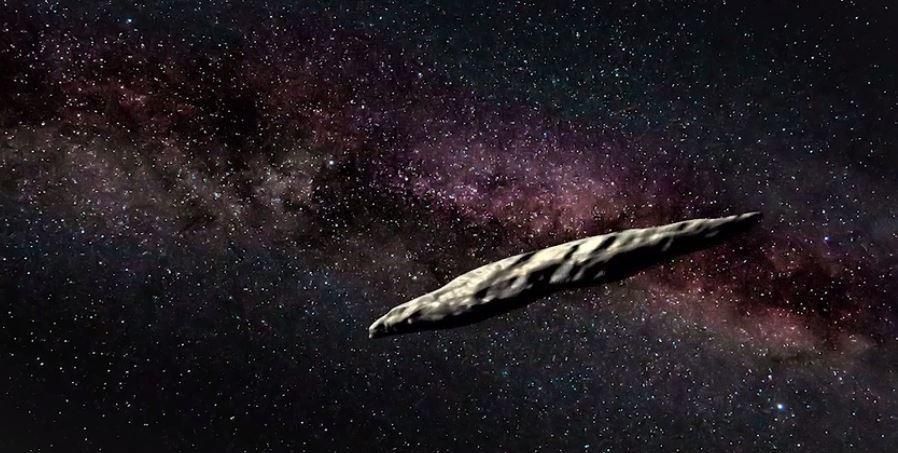Mysterious Object Confirmed To Be From Another Solar System
by Dr Stuart Clark November 20, 2017 (theguardian.com)
• Astronomers are now certain that the mysterious object detected hurtling past our sun last month is indeed from another solar system. They have named it Oumuamua, a Hawaiian term for messenger or scout.
• It is the first space rock in our solar system to have been identified as forming around another star.
• Oumuamua is extremely elongated and roughly 400 metres long. It is thought to be an extremely dark object, absorbing 96% of the light that falls on its surface, and it is red – the hallmark of organic, carbon-based molecules.
• Oumuamua will take about a decade to cross our solar system and then disappear back into interstellar space. It also rotates once every 7.3 hours.
• [Editor’s Note] Hmmmm. A long cigar-shaped object coming from a distant solar system. Now where have we seen this before?
Astronomers are now certain that the mysterious object detected hurtling past our sun last month is indeed from another solar system. They have named it 1I/2017 U1(’Oumuamua) and believe it could be one of 10,000 others lurking undetected in our cosmic neighbourhood.
The certainty of its interstellar origin comes from an analysis that shows its orbit is almost impossible to achieve from within our solar system.
Its name comes from a Hawaiian term for messenger or scout. Indeed, it is the first space rock to have been identified as forming around another star. Since asteroids coalesce during the process of planet formation, this object can tell us something about the formation of planets around its unknown parent star.
The latest analyses with ground-based telescopes show that ’Oumuamua is quite similar to some comets and asteroids in our own solar system. This is important because it suggests that planetary compositions like ours could be typical across the galaxy.
It is thought to be an extremely dark object, absorbing 96% of the light that falls on its surface, and it is red. This colour is the hallmark of organic (carbon-based) molecules. Organic molecules are the building blocks of the biological molecules that allow life to function.
It is widely thought that the delivery of organic molecules to the early Earth by the collision of comets and asteroids made life here possible. ’Oumuamua shows that the same could be possible in other solar systems.
Its characteristics have been published by two independent groups of astronomers. The first group, led by Karen Meech, University of Hawaii, also found that ’Oumuamua was extremely elongated and roughly 400 metres long. Using the European Southern Observatory’s Very Large Telescope(VLT) they also found that it rotated once every 7.3 hours.
The other group of astronomers, led by David Jewitt, University of California Los Angeles, estimated how many other interstellar visitors like it there might be in our solar system.
Surprisingly, they calculate that another 10,000 could be closer to the sun than the eighth planet, Neptune, which lies 30 times further from the sun than the Earth. Yet these are currently undetected.
FAIR USE NOTICE: This page contains copyrighted material the use of which has not been specifically authorized by the copyright owner. ExoNews.org distributes this material for the purpose of news reporting, educational research, comment and criticism, constituting Fair Use under 17 U.S.C § 107. Please contact the Editor at ExoNews with any copyright issue.
